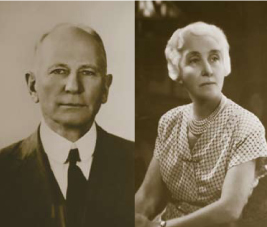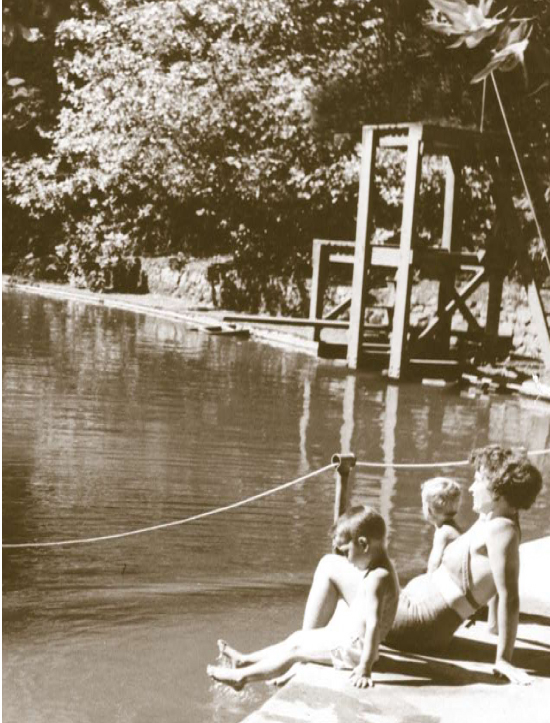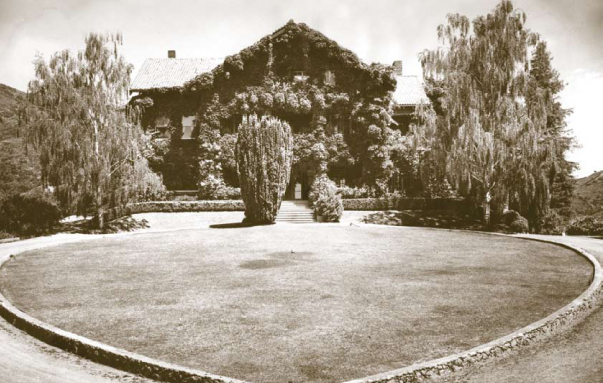Love stories don’t come much sweeter. Or richer. On April 6, 1910, 33-year-old Ralston L. White married 22-year-old Ruth Boericke. He was the handsome son of Lovell White, a founder of the Tamalpais Land and Water Company. She was born and raised in San Francisco. He was the restless kind, who’d spent two years roaming Europe before choosing Miss Boericke as his bride. She was a catch: trim, athletic and every bit as adventuresome as he. Theirs was an idyllic match.
Prior to their wedding, while surveying for roads on Mount Tamalpais above Mill Valley, Ralston discovered a parcel of land he believed would be ideal for constructing an estate—one that would be as strong and enduring as his love for Ruth. For the estate’s architect, he selected Willis Polk, the mastermind behind much of the rebuilding of San Francisco following the 1906 earthquake and fire. And along with ever-lasting love, the disaster of ’06 wasn’t far from anyone’s thoughts when Polk, along with Ralston and Ruth White, began planning the hillside estate. The three-story, 14,000-square-foot residence, they all agreed, would be built of steel and concrete.

Ralston L. White and Ruth White in the late 1930s.
Construction began in 1912 and, because at the time Ralston White was reading R. S. Hichens’s famed romance novel of the era, the property was named the Garden of Allah. Steel I-beams, from foundries south of San Francisco, were barged across the bay, transported by train from Sausalito, then hauled halfway up Mount Tam on the “World’s Crookedest Railroad,” a popular tourist attraction of the time. “The beams were unloaded at White’s Landing,” says Mike Smith, site director of what is now the Ralston L. White Retreat. “Then they were slid down an embankment and arranged at the job site.” Construction took two years; the Garden of Allah was completed in time for San Francisco’s Panama-Pacific Exposition of 1915. Many of Ralston White’s friends attended the historic event and then visited the young couple in their new estate.
The estate’s interior is both stately and charming. The grand entry foyer and stairway were copied from a previously built Willis Polk estate in San Mateo. Throughout the inside, Polk called out a variety of woodworks: the entrance hall had stained cedar paneling; the dining room, featuring a fireplace, was finished in dark oak; and the living room, with its massive, head-high fireplace, was done in stained redwood. The upper two floors featured variously sized bedrooms along with another Polk hallmark, a huge, south-facing master bedroom, again featuring a fireplace.
The original Garden of Allah estate consisted of over 80 acres (the property is now 43 acres), the highlight being a concrete-lined “swimming pool,” complete with high diving platform, created by damming a spring-fed mountain stream. Another outdoor feature was a network of trails with numerous rock bridges and viewing terraces. The property’s most talked-about landscape element is a 250-foot-long heart-shaped front lawn carefully outlined by rock and concrete curbing.
Ralston and Ruth White lived happily at the Garden from its completion in 1915 to 1933 when, during the Great Depression, they lost considerable money. As a way of coping with the setback, the couple traveled to Germany, where for eight years they lived a somewhat bohemian existence and toured most of Europe, riding bikes and third-class trains and hiking through the Austrian Alps. Late in the summer of 1941, when Ralston was 64 and Ruth 53, the Whites returned to Mill Valley, and both volunteered for various war-related efforts. Two years later, suffering from a weakened heart and coronary thrombosis, Ralston died at Ross Hospital.
Ruth Boericke White lived at the Garden of Allah until 1951, when she gave the property, in trust, to the California Academy of Sciences in San Francisco. Six years later the property was transferred, again in trust, to the Northern California Conference of Congregational Churches. In 1977, after remarrying but never having children, Ruth White Bowie died. Over 20 years later, and after watching the Garden of Allah suffer from considerable neglect, a group of Mill Valley residents, many of them living near the estate, persuaded the church organization to transfer trusteeship of the property to an entity they’d formed—the Ralston White Retreat Foundation.

For years, the estate had a spring-fed swimming pool and diving platform. Now, only a pond and traces of the platform remain.
“We wanted to restore the home and grounds to its previous glory,” says investment banker Josh Raftner, a founder and chairman of the group’s board of trustees, “and make the retreat a venue for musical, artistic, literary, educational and children-directed activities.” Over the past year, once numerous restoration and reconstruction projects were completed, the retreat hosted groups such as the United Religious Initiative and such weekend events as Amahl and the Night Visitors, staged recently by the Marin Contemporary Opera. “Effectively, we’re booked every weekend for the next several months,” says site director Smith, “but during the week we have several openings for groups wishing to hold seminars or retreats.”
For further information on the Ralston White Retreat Foundation, go to ralstonwhiteretreat.org.


